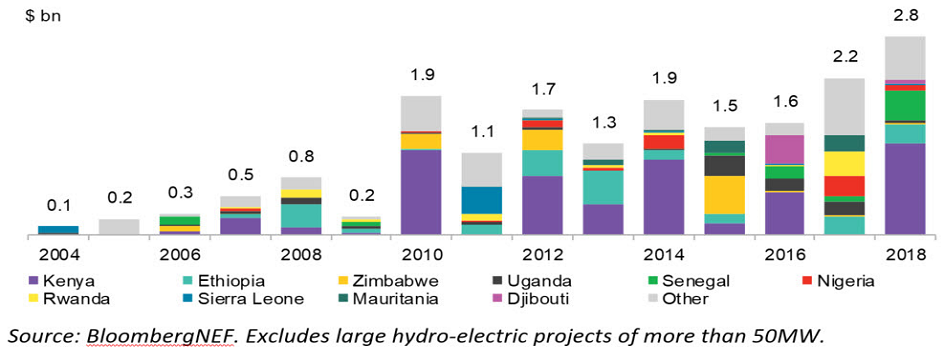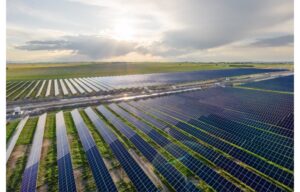- Renewable energy projects in Sub-Saharan Africa secured $2.8 billion worth of investment in 2018, excluding South Africa
- Kenya secured maximum investments and 18 nations together raised more than $10 million in clean energy funding, says BloombergNEF in a new report on the Sub-Saharan African region
- Even as the renewables market here holds potential as hydro power capacity goes down and renewables surge ahead with their cost competitiveness, there are pitfalls to be aware of that the report outlines
In 2018, Sub-Saharan Africa (SSA) saw investment worth $2.8 billion on renewable energy projects which is a record amount for the region. It is $600 million more than what SSA spent a year before with Kenya hogging most of it.
The numbers do not include South Africa which goes on to show the attractiveness of this burgeoning market for investors and proves the efficacy of cheaper technology here enabling the spread of clean energy across the continent.
In its new report Sub-Saharan Africa Market Outlook, Bloomberg New Energy Finance (BloombergNEF) points out that investors are actively exploring the continent and are not just limited to mature markets as South Africa. Of the total investment in renewables in Sub-Saharan Africa, 18 countries received more than $10 million in clean energy funding in 2018, after 23 did so in 2017, it pointed out.
Among the factors and events that have supported this growth are auction programs with multi-lateral backing such as Scaling Solar of the World Bank. The BloombergNEF report calculates almost 400 MW of PV capacity having been awarded under Scaling Solar auctions between 2015 and 2018, which is equivalent to 39% of all installed capacity outside of South Africa.
Although exciting, the SSA market is not without challenges. “Capacity surpluses in several markets belie low plant availability. Even when there is a need for new capacity, offtakers’ ability to procure new power can be hamstrung by existing expensive, long-term power purchase agreements. Notably, South Africa and Ghana are both attempting to renegotiate contracts signed with independent power producers,” reads the report.
Even when it comes to tariffs determined during auctions, BloombergNEF analysts caution that low tariffs generated by ‘generous derisking frameworks could lead governments to develop unrealistic pricing expectations’.
The Sub-Saharan African market is big on solar home systems (SHS), commercial and industrial solar and renewable-hybrid microgrids but these need specific economic and policy conditions to be commercially viable.
As utilities in the region struggle financially and are operating ageing power plants, the offtaker risk weighs heavily on investors. Even governments may not be able to raise subsidy rates.
Nonetheless, lower hydro power availability, the trend of moving away from coal and competitiveness of renewables will spur their growth in the region. The report sees potential in power pools to exchange surplus electricity between countries but the lack of private investment in transmission infrastructure, concentrated power markets and small generation fleets may play spoilsport.
The report forecasts 1.2 GW of PV to come online in Sub-Saharan Africa in 2021 which is more than twice the amount this region commissioned in 2018 (and it doesn’t include South Africa).
The report is available on BloombergNEF’s Climatoscope website.
A November 2019 International Energy Agency (IEA) report forecasted that Africa has the potential to install 320 GW of solar PV capacity by 2040 making it the continent’s largest installed electricity source (see IEA: Africa Could Host 320 GW Installed PV Capacity In 2040).



